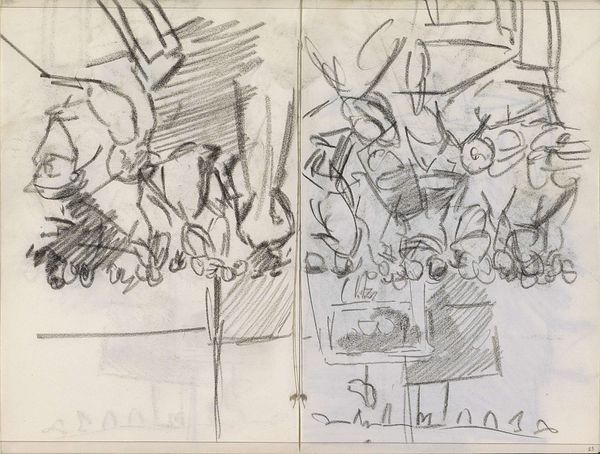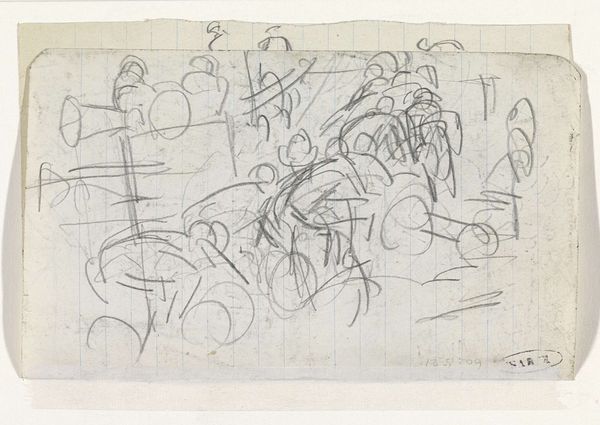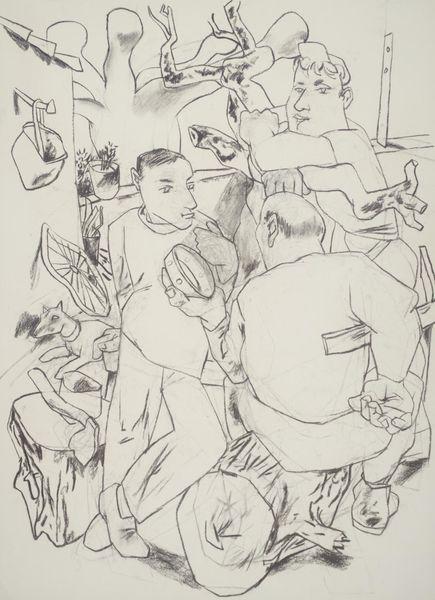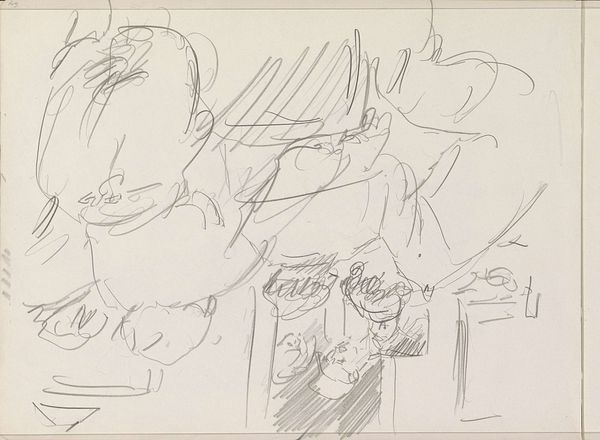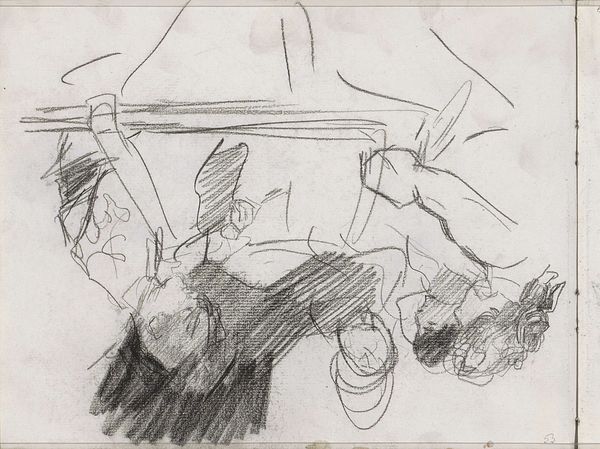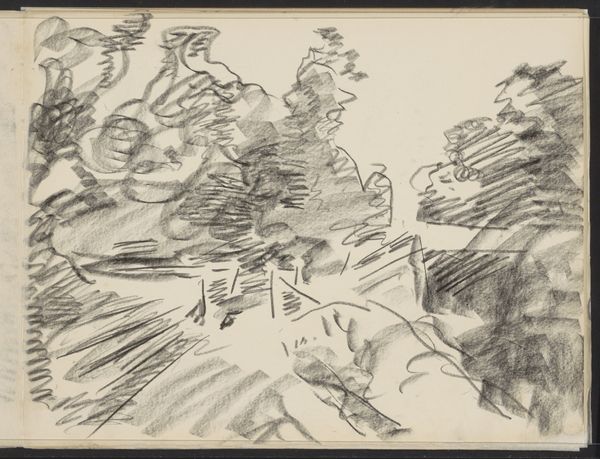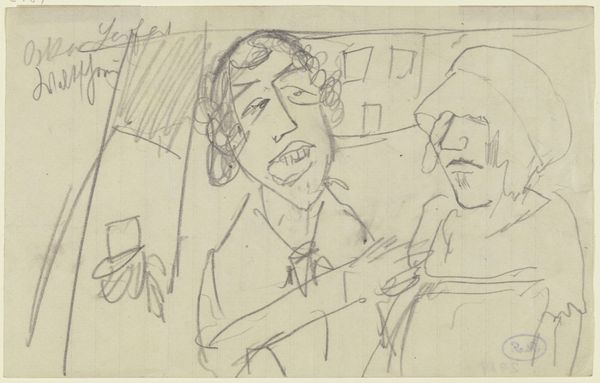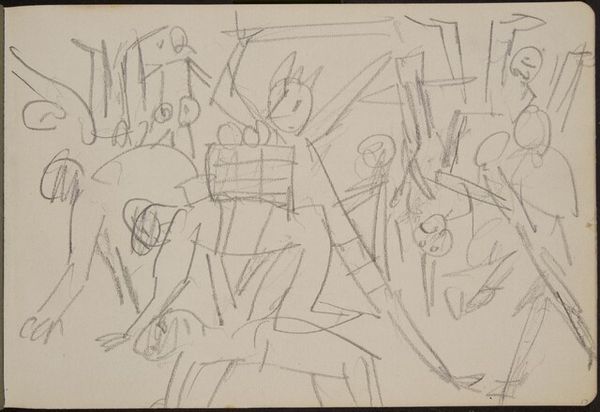
Copyright: Public Domain
Curator: The drawing before us, "Gesellschaft im Ratskeller in Halle an der Saale," or "Society in the Ratskeller in Halle on the Saale," was created by Max Beckmann in 1916 using ink, specifically Indian ink, on paper. It's currently housed here at the Städel Museum. Editor: My first impression? Unease. There’s a frantic energy in the lines, a crowded feeling. You can practically hear the din of a busy tavern just by looking at it. What strikes me most is the density of the line work – the medium itself communicates the scene's restless ambience. Curator: Indeed. It's fascinating to consider this work as an Expressionist response to the social and political climate during the First World War. Beckmann served as a medical orderly, and these close-quarters environments – taverns, hospitals – become important sites of social interaction within the backdrop of war, don't you think? Editor: Absolutely. Considering his wartime experiences, one might speculate on the availability, or lack thereof, of materials and the constraints and limitations of a small format work. How the act of drawing might serve as documentation or outlet is intriguing. Curator: His use of ink reflects not just availability but a conscious choice. It mirrors a kind of brutal honesty. And speaking to context: Halle an der Saale was a major center during this period, so such a work has obvious sociopolitical connections beyond mere scene. Editor: Thinking of production, that expressive ink line doesn’t happen in a vacuum. What other graphic traditions were inspiring him? The caricatures of Grosz? The woodcuts of the *Brücke* artists? Were readily-available printmaking technologies allowing for greater social critiques in a world saturated by propaganda? Curator: He also made print portfolios. This drawing shares that sensibility; it has a similar feel to printed, reproduced imagery intended for wider consumption, really pushing those established hierarchies in the art world. Editor: Ultimately, it feels incredibly personal and raw but at the same time like a broader indictment of a society on the brink. I'm grateful the museum keeps such potent reflections on view. Curator: For me, understanding its origins reveals how deeply interconnected personal expression and world-changing events can be. A true example of the power of art!
Comments
No comments
Be the first to comment and join the conversation on the ultimate creative platform.
